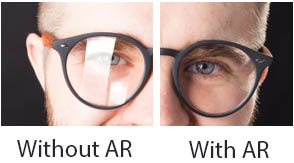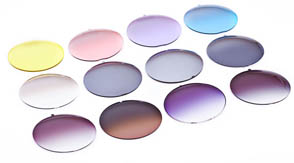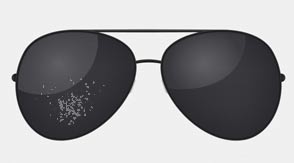How to choose the best lenses for your glasses
More than your frames, your lenses will determine how happy you will be with your eyeglasses.
Buying eyeglass lenses is not an easy task. In fact, there are so many choices for lenses and coatings, it's easy to be confused about what's worth buying.
Why choosing the right eyeglass lenses is so important
When buying eyeglasses, the frame you choose is important to your appearance, but the eyeglass lenses you choose influences four factors: appearance, comfort, vision and safety.
A common mistake people often make when buying eyeglasses is not spending enough time considering their choices of eyeglass lens materials, designs and coatings.
Eyeglasses: Tips to Help You Pick the Right Lenses
-
Glass lenses.
In the early days of vision correction, all eyeglass lenses were made of glass. Although glass lenses offer exceptional optics, they are heavy and can break easily, potentially causing serious harm to the eye or even loss of an eye. For these reasons, glass lenses are no longer widely used for eyeglasses.
-
Plastic lenses.
In 1947, the first lightweight plastic eyeglass lenses were introduced. The lenses were made of a plastic polymer called CR-39. Because of its light weight (about half the weight of glass), low cost and excellent optical qualities, CR-39 plastic remains a popular material for eyeglass lenses.
-
Polycarbonate lenses
In the early 1970s, the first polycarbonate lenses were introduced for safety glasses. Later that decade and in the 1980s, polycarbonate lenses became increasingly popular and remain so today. Originally developed for helmet visors for the United States Air Force, for "bulletproof glass" for banks and other safety applications, polycarbonate is lighter and significantly more impact-resistant than CR-39 plastic, making it a preferred material for children's eyewear, safety glasses and sports eyewear. In 2001, a newer lightweight eyeglass lens material known as Trivex was introduced with similar impact-resistant properties as polycarbonate.
-
High-index plastic lenses
In the past 20 years, in response to the demand for thinner, lighter eyeglasses, a number of lens manufacturers have introduced high-index plastic lenses. These lenses are thinner and lighter than CR-39 plastic lenses.
Eyeglass Lens Coatings
There are almost as many coatings as there are lenses.

Anti-reflective.

Tinted lenses

Mirror coatings






